Showing up in organic search results is one of the best long-term ways to get visitors to your e-commerce website.
While you can pay for ads through platforms like Google Ads to appear at the top of search results, running ads can become very expensive over time.
Plus, research shows that most people are more likely to click on organic search results than paid ads.
So, if you’re struggling to drive traffic to your e-commerce store, you need to perform an SEO audit.
Whether it's fine-tuning category pages to rank for competitive keywords, writing product descriptions that match what people are searching for, or boosting your site's technical performance, every small improvement helps you succeed.
In this post, we'll share the exact eCommerce SEO audit checklist for your website to climb higher in search rankings. By the end, you'll have everything you need to outshine your competitors and see real, measurable growth.
What Is an Ecommerce Website Audit?
Think of it as a health checkup, an e-commerce website audit helps identify what's working, what's not, and where your online store can improve. It reviews how well your site performs, how easy it is to use, and how strong your content is. When you run an online shop, auditing your website means examining key areas such as:
- Page loading speed
- Mobile responsiveness
- Website navigation
- Organic search rankings
- Keyword usage
- Content quality
- Internal linking
- Site Security
- Accessibility
These factors all play a big role in both your search engine rankings and the experience visitors have on your site. By analyzing them, you can uncover problems and find new opportunities to make your website better.
How to Perform an eCommerce SEO Audit? 18 Steps Checklist
Due to how critical an SEO audit is for ecommerce sites and the many elements to tackle, it’s easy to get overwhelmed with the task.
The step-by-step checklist below should help you perform this audit effectively by highlighting the areas to focus on. An ecommerce SEO audit can be split into three larger steps:
- On-Page audit
- Off-page SEO audit
- Technical SEO audit
Explore Our Ecommerce SEO Services!
On-Page SEO Audit Checklist
Optimizing individual pages is crucial for targeting specific keywords and enhancing user engagement. This ensures each page on your eCommerce site achieves maximum visibility and conversion potential.

1. Keyword Mapping
Keyword mapping is the foundation of any strong SEO plan, especially for eCommerce.
It helps you figure out exactly what search terms your potential customers are using when they’re looking for products like yours.
Once you know that, you can optimize your category and product pages to match those terms. An ecommerce SEO consultants can help you refine your keyword strategy by providing expert insights into high-converting search terms specific to your market.
Once you know that, you can optimize your category and product pages to match those terms.
Start by understanding your audience.
Ask: What words would they type into Google to find items like mine? These are your primary keywords, and getting them right is crucial.
Use tools like Google Keyword Planner, Ahrefs, or Semrush to create a list of keywords tied to your collections and product pages.
For example, if you have a clothing business, start with broader terms like "jackets," but also go after long-tail keywords like "men’s waterproof winter jackets" or "lightweight women’s running jackets," these terms attract users who are closer to buying.
Also, check out your competitors. See which keywords they’re ranking for and how they structure their pages.
2. Title Tags and Meta Descriptions
Once your keywords are mapped, it’s time to make them work by inserting them into your title tags and meta descriptions.
Think of title tags and meta descriptions like the headlines and teaser blurbs for your pages in Google search results. They play a big role in convincing users to click on your store.
- Title Tags: Craft unique, engaging titles for each page that include primary keywords and encourage clicks.
- Meta Descriptions: Write concise, compelling summaries that clearly communicate the page's value proposition and improve click-through rates from search results.
Each page must have a unique title and meta description.
3. Header Tags (H1, H2, H3)
Header tags (H1, H2, H3) help organize your content for users and search engines.
Use header tags to logically organize page content, enhancing readability and SEO hierarchy.
Also, try to naturally integrate keywords into headers to reinforce topic relevance and improve SEO signals to search engines.
- Start with a strong H1 that includes your primary keyword. For example: "Stylish Office Chairs for Home and Workspace Comfort."
- Use H2 and H3 tags to break up sections, weaving in secondary keywords naturally. For example H2: "Top Ergonomic Office Chairs" and H3s: "Adjustable Armrests" | "Breathable Mesh Backs"
Good headers improve readability and SEO at the same time. Businesses offering android mobile application development services should also ensure that their app landing pages are optimized with these elements for better visibility and engagement.
4. Product Descriptions
Too many online stores copy manufacturer descriptions, which hurts SEO and sales.
Your product description should tell a story that highlights the product's benefits first, then features.
Instead of writing: "This chair is durable and adjustable," say: "Stay comfortable all day with our ultra-durable office chair, featuring adjustable settings designed for long work hours."
Naturally include keywords like “best ergonomic office chair” while keeping the flow smooth. Also, add social proof like customer reviews or industry awards wherever possible.
5. Image Optimization
Images are critical for ecommerce marketing, but they must be optimized.
- Alt Text: Add descriptive and keyword-relevant alt text to every image to improve accessibility and help images rank in image search results.
- File Names: Use SEO-friendly filenames (e.g., "blue-running-shoes.jpg") to give search engines additional context.
Fast-loading images mean happier users and better SEO.
6. Internal Linking
Internal links guide visitors across your site and help search engines understand your content hierarchy.
- In product descriptions, link related products. For example, On a standing desk page, link to adjustable stools or anti-fatigue mats.
- On category pages, link down into subcategories like “Sit-Stand Desks” or “Standing Desk Accessories” using keyword-rich anchor text.
- Blogs are perfect for internal linking, too. For example, A blog post about "Setting Up the Perfect Home Office" can link to your ergonomic chairs, desks, and monitor arms.
Good internal linking improves user experience and SEO.
7. User-Generated Content (UGC)
Encouraging user reviews, photos, and Q&A is a goldmine for SEO and trust.
- Reviews: Set up a review system on product pages, with a top seo agency strategy, since reviews naturally bring in keywords like 'best affordable standing desk' and strengthen your pages' SEO.
- FAQs: Let users ask and answer questions. A standing desk page could have FAQs like: "Is this desk easy to assemble?" with real answers from customers and your team.
- Social Media Integration: Encourage customers to post photos using hashtags like #MyWorkspaceGoals, and feature their photos on your product pages. UGC makes your site dynamic, authentic, and more discoverable, and incorporating responsive web design services ensures that this content is seamlessly accessible across all devices, enhancing both user experience and SEO.
UGC makes your site dynamic, authentic, and more discoverable.
8. Content Marketing
Content marketing is essential if you want to pull in organic traffic beyond product searches.
- eBlog Posts: Create content around your niche. For example: If you sell kitchen gadgets, post articles like “Top 10 Must-Have Tools for a Modern Home Chef.”
- How-To Guides: Solve customer problems. For example: A store selling home gym equipment could write “How to Set Up a Budget Home Gym in a Small Space.”
- Videos: Short tutorials or product demos work wonders. For example: Post a quick YouTube guide "How to Adjust Your Ergonomic Office Chair for Perfect Posture," linking back to your product pages.
Helpful content builds trust, drives visitors, and naturally boosts your SEO with internal links. By incorporating e-commerce marketing services, you can amplify the reach and effectiveness of your content strategy, helping your business grow faster and attract more organic traffic.
Off-Page SEO Audit Checklist
Now that we’ve covered the on-page work, let’s move on to the off-page side of the eCommerce SEO checklist, where authority and trust are built outside your website. good SEO company can help identify crucial off-page factors such as backlinks, social signals, and local citations, which influence your website's authority and search engine rankings.

An Off-Page SEO Audit evaluates external factors like backlinks, social signals, and local citations that influence your website's authority and search engine rankings.
If you're in a niche industry such as energy, partnering with an oil and gas marketing firm can provide targeted strategies for building backlinks and gaining trust within that specific sector.
Explore Local Search Engine Optimization Services!
1. Backlink Profile
Building a strong backlink profile is crucial for establishing authority and trust in the eCommerce world. Backlinks from reputable websites show search engines that your store is reliable and relevant.
But in eCommerce, link-building needs a smart and targeted approach. By focusing on acquiring backlinks from high-authority sites, you can gain the trust of both search engines and potential customers. This is one of the many solutions for eCommerce growth, as strong backlinks not only improve SEO but also attract valuable traffic that converts.
But in eCommerce, link-building needs a smart and targeted approach.
Prioritize acquiring backlinks from reputable and relevant websites within your industry. High-quality backlinks serve as endorsements, signaling trustworthiness to search engines.
Start by finding industry-specific blogs, media outlets, or influencers. Reach out for guest posts, collaborations, or product reviews.
For example, if you run an online store selling artisan kitchenware, partner with food bloggers or chefs who can feature your products in recipes or tutorials.
Also, create shareable content that naturally attracts backlinks. For instance, a cookware store could publish a “2026 Guide to Choosing the Perfect Cast Iron Skillet,” making it easy for food bloggers and magazines to reference and link back to.
Similarly, travel and tourism marketing agencies could publish destination guides or cultural insights that attract backlinks from travel bloggers and online magazines.
2. Social Media
While social media shares don’t directly boost your SEO rankings, they play a big role in increasing your visibility and the chances of getting backlinks and brand mentions.
Focus on the platforms your target audience prefers.
For example, Pinterest is perfect for highly visual content like home décor or recipe ideas, while TikTok might be ideal for showcasing unique products like handmade jewelry through quick, fun videos.
Post engaging content regularly, including new product launches, customer stories, behind-the-scenes peeks, and how-to videos.
For example, a stationery store could run a contest: “Share your creative journal setup using our planners for a chance to win a $50 voucher!”
This not only drives traffic but also creates user-generated content you can feature across your marketing channels.
3. Brand Mentions
Unlinked brand mentions are a hidden SEO opportunity that many eCommerce brands miss.
When blogs, forums, or social media users mention your brand but don’t link back to your site, you lose potential SEO value.
Use tools like Google Alerts, Ahrefs, or Mention to track mentions of your brand name.
When you spot an unlinked mention, politely reach out to the site owner or writer, thank them for the mention, and ask if they could add a link to your website.
For example, if a popular lifestyle blogger writes, “I love planning my days using [Brand] journals,” you could reach out and request that they link "journals" to your online store.
Also, monitor review sites like Trustpilot, Google Reviews, and Yelp.
4. Local SEO (If Applicable)
To attract customers in a specific area, any eCommerce or physical store needs to prioritize best local SEO services as part of its digital strategy can ensure that when someone searches for products or services "near me" or in a certain city, your business appears high in the search results.
When people look for local businesses like "organic grocery store in Chicago" or "handmade furniture shop near me," Google often shows a "local pack" (a map with business listings) before any other organic results.
If your site and listings are optimized, you can appear in this prime spot, gaining more clicks, calls, and store visits. For larger companies, especially those using SaaS platforms, integrating enterprise SEO marketing company strategies can further enhance local search visibility and drive targeted traffic to your business.
- Google Business Profile Optimization: Your Google Business Profile (formerly Google My Business) is one of the most powerful tools for local SEO. It’s often the first thing users see when they search for your business or related terms.
- NAP Consistency Across Directories: Your Name, Address, and Phone Number (NAP) must be consistent everywhere it appears online. This includes your website, Yelp, Yellow Pages, Facebook, TripAdvisor, local chamber of commerce listings, and any other online directories.
- Customer Reviews and Reputation Management: Customer reviews build trust and heavily influence local rankings. More positive, recent reviews signal to Google that your business is credible and popular with customers.
Technical SEO Audit Checklist
Technical SEO is the backbone of any successful eCommerce website, ensuring that search engines can efficiently crawl and index your site.

One of the major aspects of technical SEO involves assessing and optimizing elements that affect your site's crawlability and indexability.
1. Website Crawlability and Indexability
Robots.txt is a text file located at the root of your website that instructs search engine crawlers on which pages or sections of your site they are permitted to access. Proper configuration of this file is vital to prevent search engines from crawling non-essential or sensitive pages, such as admin panels or duplicate content sections.
Regularly reviewing your file helps maintain optimal crawl efficiency and prevents accidental blocking of important content.
Similarly, an XML Sitemap is a file that lists all the important URLs on your website, serving as a roadmap for search engine crawlers. It provides metadata about each URL, such as the last modification date, change frequency, and priority, aiding in more intelligent crawling.
A well-maintained XML sitemap enhances the discoverability of your site's content, especially for large eCommerce websites with numerous product pages. For best results, integrating these practices with professional digital marketing services can significantly improve your site's visibility and search engine performance.
2. Site Speed and Performance
Site speed and overall performance directly impact SEO rankings, making them critical for delivering a positive user experience
One of the most important aspects of site speed is page load time, a website should load in under three seconds.
Slow-loading pages can lead to higher bounce rates, lost customers, and lower rankings in search engine results. To enhance speed, image optimization plays a vital role.
By compressing images without compromising quality, websites can significantly reduce their load times while maintaining a visually appealing interface.
It's essential to use appropriate file formats (like WebP or compressed JPEGs) and apply lazy loading for images that are off-screen.
Another key feature is browser caching, which allows web browsers to store copies of your site’s resources locally.
This way, when users revisit your site, the browser can load pages much faster without downloading the same resources again. Implementing these practices reducing page load time, optimizing images, and enabling browser caching ensures a faster, smoother experience for users and boosts the website’s SEO performance.
3. Site Architecture
An effective site architecture is crucial for both user experience and search engine optimization. It ensures that visitors can easily navigate your website and that search engines can efficiently crawl and index your content.
Key Components:
- URL Structure: Use clean, descriptive URLs that reflect the content of the page. Avoid unnecessary parameters or complex strings.
- Navigation: Implement a logical hierarchy with clear categories and subcategories. A well-structured menu helps users find information quickly and allows search engines to understand the relationship between pages.
- Internal Linking: Connect related pages through internal links to facilitate easy navigation and distribute link equity throughout your site. This not only aids in user navigation but also helps search engines discover and prioritize important pages.
By focusing on these elements, you create a website structure that is both user-friendly and optimized for search engines, leading to better visibility and improved user engagement.
4. Canonical Tags
Canonical tags are HTML elements that help prevent duplicate content issues by specifying the preferred version of a webpage.
In e-commerce, where similar products might have different URLs due to sorting or filtering, canonical tags guide search engines to treat the specified URL as the authoritative version.
Proper use of canonical tags consolidates link equity and prevents dilution of page rankings due to duplicate content.
By meticulously managing your file, maintaining an up-to-date XML sitemap, and implementing canonical tags correctly, you enhance your website's crawlability and indexability.
These technical SEO practices are essential for ensuring that search engines can effectively navigate and understand your e-commerce site, leading to improved visibility and higher search rankings. For businesses with complex website structures and large inventories, investing in ecommerce website design services is crucial to scale visibility and maintain long-term organic growth.
5. Mobile Responsiveness
With mobile traffic surpassing desktop usage, ensuring a seamless mobile experience is crucial for attracting and retaining customers.
Implementing a responsive design allows your website to adapt to various screen sizes, providing a consistent and user-friendly interface across all devices.
This approach not only enhances user experience but also aligns with Google's mobile-first indexing, where the mobile version of your site is primarily considered for search rankings.
Key elements of effective mobile optimization include:
- Responsive Design: Ensures your site adjusts seamlessly to different screen sizes, enhancing usability.
- Touch-Friendly Elements: Design buttons and links that are easy to tap, improving navigation and reducing user frustration.
- Readable Text: Use legible font sizes and styles to eliminate the need for zooming.
- Avoid Intrusive Pop-Ups: Minimize or eliminate pop-ups that can obstruct content and hinder the user experience.
- Streamlined Navigation: Implement intuitive navigation paths and quick access to product categories.
- Efficient Checkout Process: Offer one-click checkout options to expedite the purchasing process.
Regularly testing your site's performance on various devices and operating systems ensures a smooth experience for all users.
Explore Our Technical SEO Services!
6. Secure Website (HTTPS)
Ensuring your e-commerce website is secure is fundamental for building trust with users and protecting sensitive information.
When a site uses an SSL certificate correctly, it displays HTTPS in the URL instead of HTTP, often accompanied by a padlock icon in the browser address bar.
This signals to visitors that their personal and payment information is protected, which is especially important for online stores handling transactions.
The following are the main points of HTTPS for a Secure Website
- User Trust: A secure website builds trust by protecting sensitive user information, such as personal and payment details.
- SSL Certificate: Implement an SSL certificate to encrypt data between the user's browser and your server.
- Visual Indicators: HTTPS appears in the URL along with a padlock icon, signaling that the site is secure.
- Importance for eCommerce: Essential for online stores that handle financial transactions and user accounts.
- SEO Advantage: HTTPS is a confirmed Google ranking factor, meaning it can help boost your site's search engine performance.
- Full Site Security: Ensure all pages (not just checkout or login pages) are served over HTTPS for complete security and credibility.
Tracking SEO Checklist
Without measuring performance, you won't know which strategies are working or where to improve.
![]()
Here’s everything you should monitor:
1. Google Analytics
Google Analytics is essential for tracking your website’s overall performance. It gives deep insights into how users behave on your site, where your traffic comes from, and how well your pages are converting.
Regularly reviewing this data helps you fine-tune your SEO strategy and understand your audience better. This is especially valuable for businesses focusing on performance marketing strategies, where analyzing data and optimizing campaigns based on user behavior can drive higher ROI.
2. Google Search Console
While Google Analytics focuses on user behavior, Google Search Console shows you how your website performs in search results.
It lets you monitor impressions, clicks, and average rankings for your targeted keywords. You can also identify crawl errors, indexing issues, and opportunities for optimization.
3. Conversion Tracking
Tracking conversions is key to understanding what actually drives revenue. Use tools like Google Analytics or Meta Pixel to track specific actions such as product purchases, newsletter sign-ups, or file downloads.
This helps you measure not just traffic but meaningful business outcomes.
4. Heatmaps and User Behavior Tools
Tools like Hotjar, Crazy Egg, and Mouseflow allow you to visualize how users interact with your site through heatmaps and session recordings.
They reveal where users click, how far they scroll, and where they drop off, helping you optimize the user journey for better engagement and conversions.
5. A/B Testing
We redesigned the landing page, an,d through A/B testing, discovered which layout drove higher conversions. You can test different versions of product pages, CTAs, images, or layouts to see which version performs better.
For example, test one product page with a large "Buy Now" button at the top versus another with a button further down the page.
6. Rank Tracking
Monitoring your keyword rankings is critical for measuring SEO success. Tools like Semrush, Ahrefs, and Moz help you track the performance of your primary and secondary keywords over time.
Consistent rank tracking shows you whether your SEO efforts are boosting your visibility and where you need to focus next.
Tracking SEO is not a one-time task.
It’s an ongoing process that helps you adapt, grow, and stay ahead of the competition in the fast-moving eCommerce world. Especially in sectors like digital transformation consulting, where staying visible in search results directly impacts lead generation and customer acquisition, continuous SEO tracking is essential.
Get Your Free SEO Audit Report Today!
Top eCommerce SEO Audit Tools to Boost Your Site's Performance
An effective SEO for E-commerce audit is essential for identifying hidden issues and optimizing your site for better rankings, increased organic traffic, and improved user experience. By leveraging the right SEO audit tools, you can uncover problems, optimize your store, and create a focused action plan for SEO success in E-commerce. Below are some of the best SEO E-commerce audit tools, each designed to help you improve your SEO for E-commerce websites and drive more traffic to your site.
1. Ahrefs Site Audit and Backlink Checker
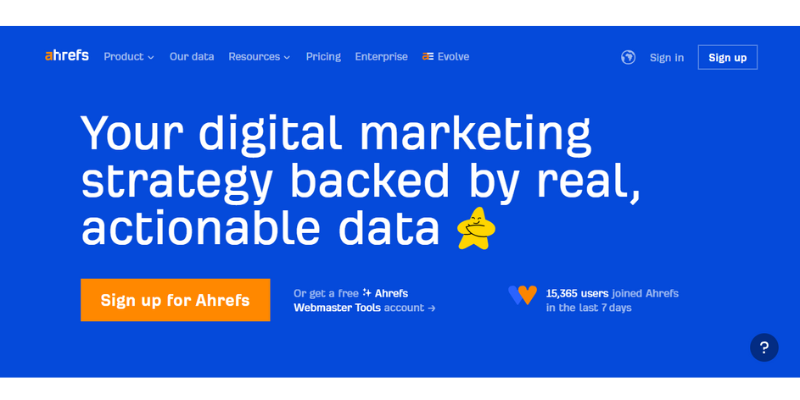
-
Purpose: Uncover technical SEO issues and assess your backlink profile to improve your site’s authority.
-
How to Use:
-
Perform a site audit to spot SEO errors on your E-commerce website.
-
Analyze your backlink profile, including lost backlinks and anchor text distribution.
-
Study competitor backlink strategies to discover new link-building opportunities.
-
-
Use Case: Identify toxic backlinks that are harming your domain authority, then disavow them to improve your rankings in search results.
2. SE Ranking Website Audit Tool
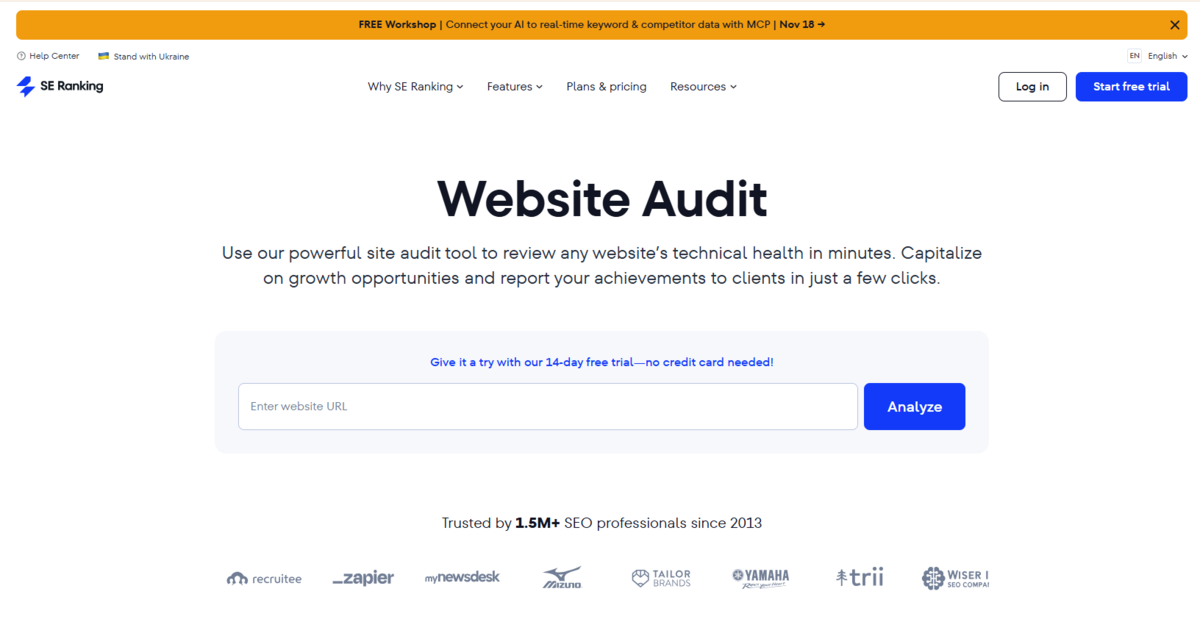
-
Purpose: Evaluate your site's technical health and identify issues hindering its performance on search engines.
-
How to Use:
-
Generate SEO reports for your entire E-commerce site in minutes.
-
Review suggestions for fixing issues and improving performance, such as crawling issues and slow loading speeds.
-
Analyze up to 2 million pages with JavaScript rendering and 115+ metrics.
-
-
Use Case: Quickly identify and fix issues that may be preventing your E-commerce site from ranking higher in search, including problems related to JavaScript and complex site structures.
3. Semrush Site Audit Tool
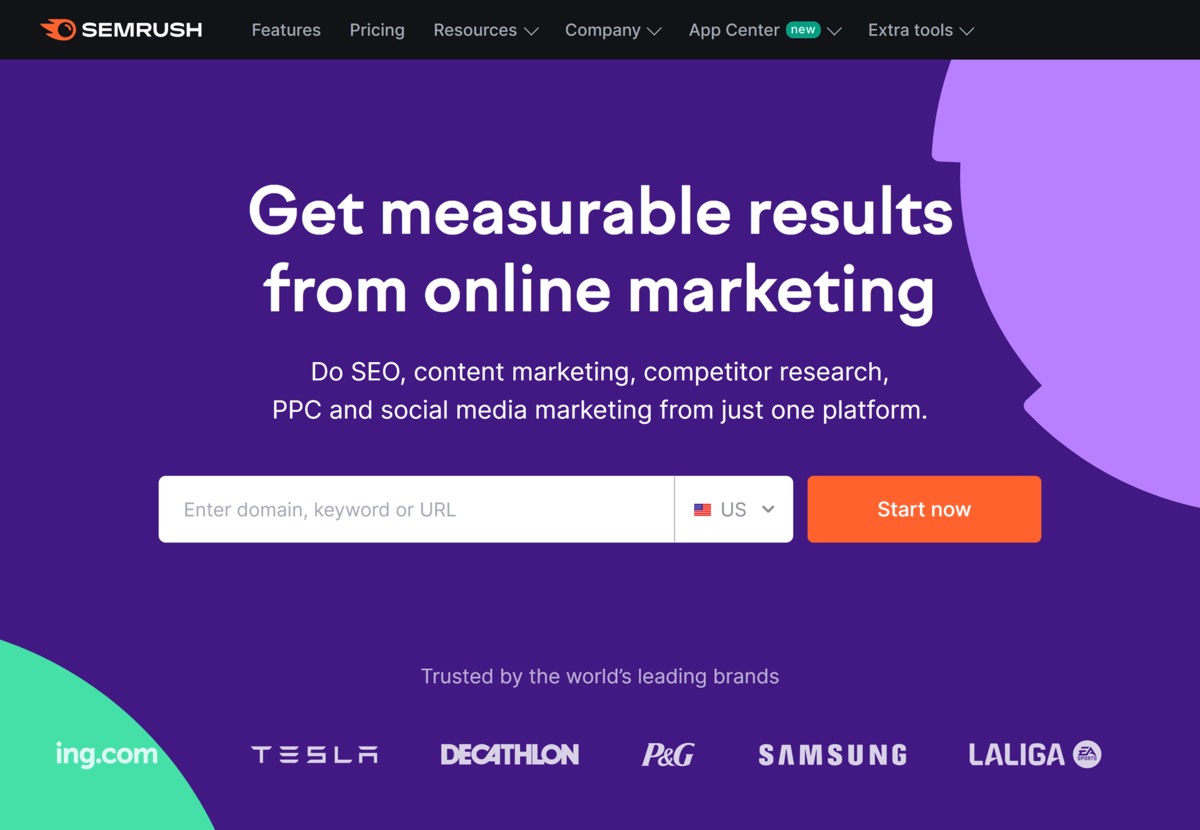
-
Purpose: Automate SEO health checks across your entire E-commerce store to track and fix on-site and technical issues.
-
How to Use:
-
Set up an ongoing SEO audit project to continuously monitor your E-commerce site's SEO performance.
-
Track 120+ on-site SEO issues, including performance, crawlability, and internal linking.
-
Use thematic reports to prioritize fixes for key SEO areas such as performance and international SEO.
-
-
Use Case: Easily identify issues like broken internal links across large product catalogs, helping you maintain a high-quality user experience.
4. Google Search Console
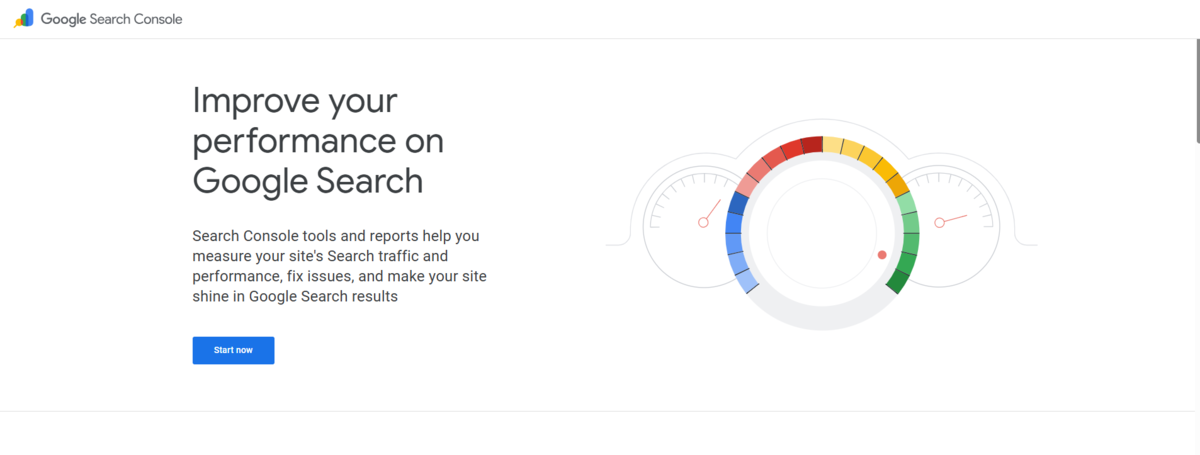
-
Purpose: Track your website’s indexing status and identify SEO issues from Google's perspective.
-
How to Use:
-
Check for indexing errors in the Coverage report.
-
Review organic clicks, impressions, and average positions using the Performance report.
-
Troubleshoot specific pages by inspecting their URL status.
-
Monitor Core Web Vitals to optimize page speed for your E-commerce site.
-
-
Use Case: If certain product or category pages aren’t appearing in search results, check their indexing status and troubleshoot indexing issues directly in Google Search Console.
5. Ubersuggest SEO Audit Tool
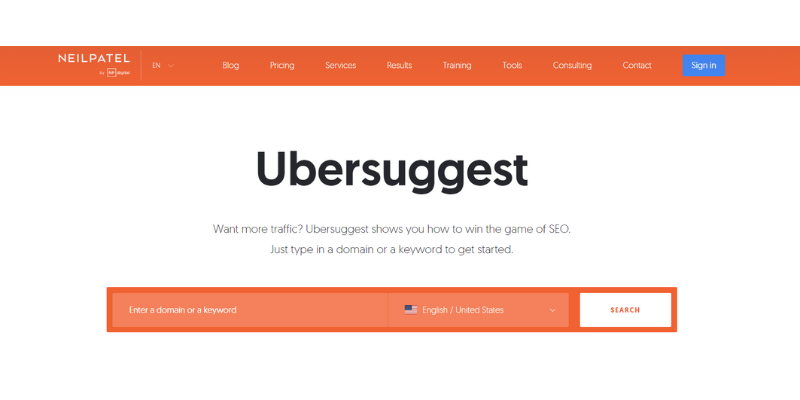
-
Purpose: Identify SEO issues affecting your site and find opportunities for growth to improve rankings and performance.
-
How to Use:
-
Conduct a comprehensive site audit to detect issues like broken links, slow loading speeds, and crawlability problems.
-
Research high-ranking keywords for your E-commerce niche.
-
Analyze competitor strategies to identify gaps and opportunities for improvement.
-
-
Use Case: Fix SEO errors impacting your rankings and site health, while leveraging competitor analysis to stay ahead of SEO trends and enhance site visibility.
6. Google PageSpeed Insights
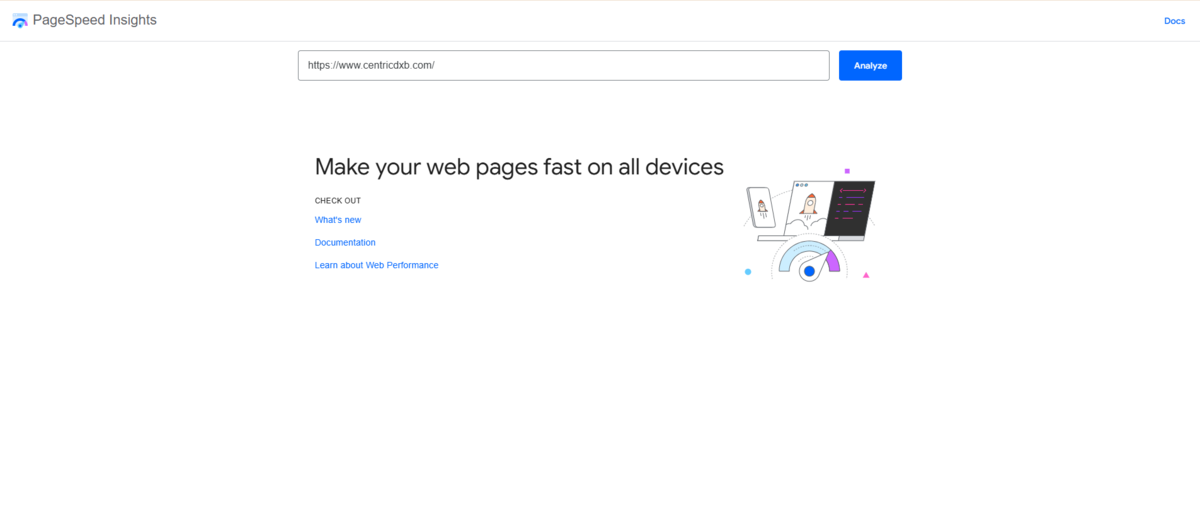
-
Purpose: Assess your E-commerce website's speed and uncover optimization opportunities to boost loading times and user experience.
-
How to Use:
-
Test the loading speeds of key pages like product, collection, and homepage.
-
Implement optimization suggestions such as image compression and script minification.
-
-
Use Case: Speed optimization is crucial for E-commerce websites, use PageSpeed Insights to pinpoint slow category or product pages, then implement fixes for faster load times.
7. Screaming Frog SEO Spider
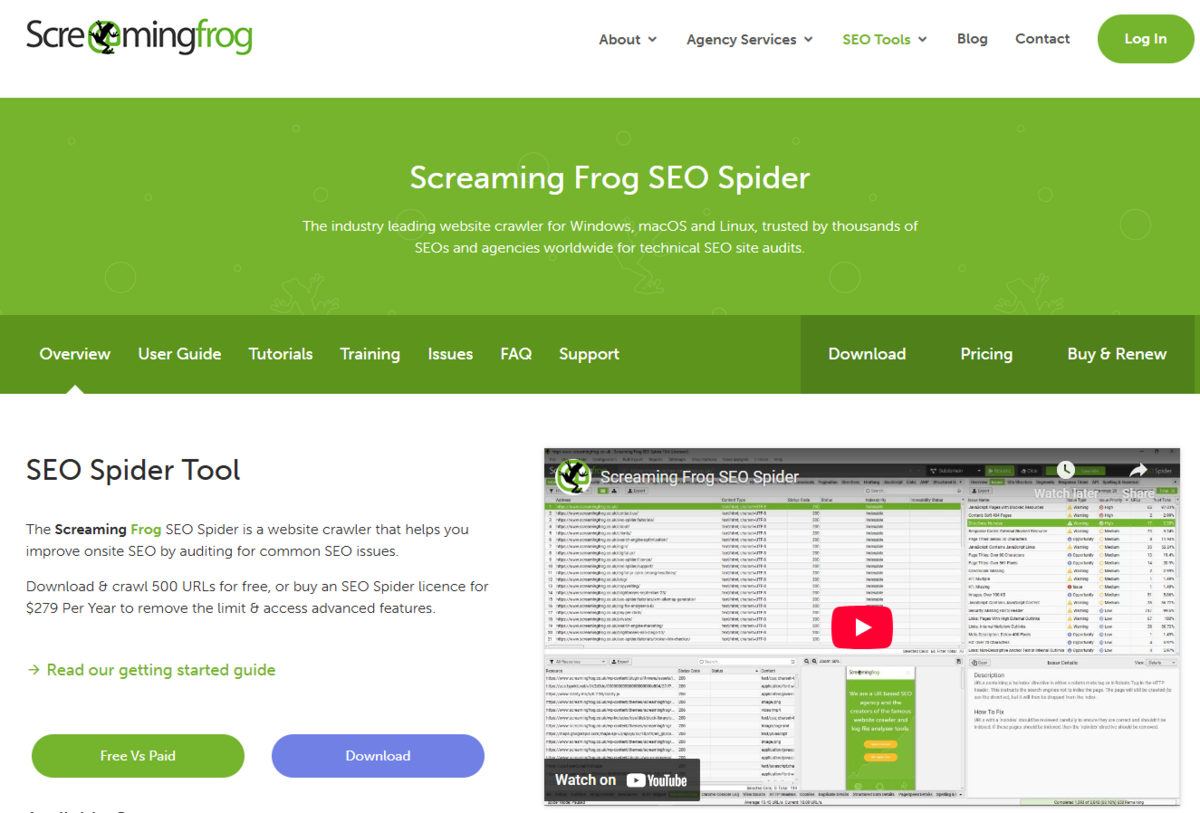
-
Purpose: Conduct a detailed crawl of your E-commerce website to identify critical technical issues affecting your SEO performance.
-
How to Use:
-
Crawl your entire site to locate issues like broken links, duplicate meta tags, and missing alt text.
-
Export reports to focus on specific problem areas.
-
-
Use Case: Find and fix issues like broken internal links, duplicate tags, and missing alt text, which can hinder your search engine rankings and SEO for E-commerce sites.
6 Common E-commerce SEO Mistakes to Avoid
Even well-designed E-commerce stores can suffer from hidden SEO issues that silently hurt their rankings and conversions. These issues are often overlooked but can be easily fixed with the right audit tools. Below are some of the most common SEO mistakes on E-commerce sites:
1. Duplicate Content Across Product Pages
- Issue: Copy-pasting product descriptions from manufacturers leads to duplicate content, which Google may penalize, resulting in lower visibility in search results.
- Solution: Write unique, keyword-optimized product descriptions to stand out and avoid duplicate content penalties.
2. Neglecting Category Page Optimization
- Issue: Category or collection pages are powerful SEO assets but are often under-optimized, lacking proper meta tags, headings, or content.
- Solution: Enhance category pages with SEO-optimized introductions, internal links, and optimized titles/meta descriptions to improve rankings.
3. Orphaned Product Pages
- Issue: Orphaned pages that are not linked from any other page on the site are difficult for search engines to find and index.
- Solution: Ensure all product pages are linked from category pages or other high-traffic areas of the site.
4. Thin Content on Product Pages
- Issue: Product pages with little content (under 300 words) may be deemed low quality by search engines, reducing their visibility.
- Solution: Enrich product pages with unique content such as FAQs, reviews, and detailed product specifications to improve their value and ranking potential.
5. Crawl Budget Wastage
- Issue: Large E-commerce sites with numerous filter-generated URLs can waste Google’s crawl budget, reducing the overall effectiveness of crawling.
- Solution: Control crawling and indexing with proper robots.txt settings and canonical tags to prioritize important pages.
6. Missing or Incorrect Canonical Tags
- Issue: Without canonical tags, Google may index duplicate versions of the same product page, leading to poor SEO performance.
- Solution: Implement correct canonical tags to ensure Google indexes the preferred version of each page, reducing duplicate content issues.
Frequently Asked Questions (FAQs)
What Is An eCommerce SEO Site Audit?
An eCommerce SEO site audit reviews your online store’s SEO performance, helping identify issues like slow loading times and poor mobile optimization, so you can improve rankings and user experience.
How Often Should I Conduct an eCommerce SEO Audit?
It’s recommended to perform an eCommerce SEO audit every 3-6 months to keep your website optimized and aligned with SEO best practices.
What Should be Included in an eCommerce SEO Checklist?
An eCommerce SEO checklist includes keyword mapping, title tags, product descriptions, image optimization, mobile responsiveness, and technical SEO elements like crawlability and site speed.
How Does an eCommerce SEO Audit Improve Rankings?
An eCommerce SEO audit fixes issues such as slow page speed or missing metadata, improving your site’s visibility and search engine rankings.
What Tools are Used for an eCommerce SEO Audit?
Tools like Google Analytics, SEMrush, Ahrefs, and Moz help conduct an eCommerce SEO audit, providing insights into performance and areas for improvement.
How Can an eCommerce SEO Audit Increase Sales?
An eCommerce SEO site audit improves site functionality, rankings, and user experience, leading to higher traffic and better conversion rates, boosting sales.
Conclusion
Conducting a comprehensive eCommerce SEO audit is essential for ensuring your online store's visibility and success. This process helps identify areas for improvement across technical, on-page, and off-page SEO elements, leading to enhanced search engine rankings and user experience. A thorough audit examines your website's structure, loading speed, mobile responsiveness, and content quality. By addressing these factors, you can improve your site's crawlability and indexability, making it easier for search engines to understand and rank your content. Off-page SEO elements, such as backlink profiles and social signals, are also critical components of the audit.
Building high-quality backlinks from reputable sources and encouraging social engagement can significantly boost your site's authority and trustworthiness in the eyes of search engines. Regularly performing SEO audits allows you to stay ahead of algorithm updates and industry trends, ensuring your strategies remain effective over time. Thus, by continuously monitoring and refining your SEO efforts, you can maintain a competitive edge, attract more targeted traffic, and drive higher conversions and revenue for your eCommerce business. For an organized approach, following an ECommerce SEO Audit Checklist can guide you through key areas to focus on for optimization. If you're looking for expert assistance in conducting your audit, you can turn to Centric, a leading digital transformation agency that specializes in helping eCommerce businesses achieve SEO excellence.








